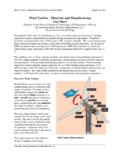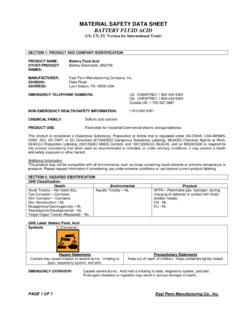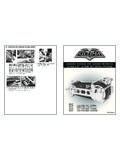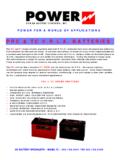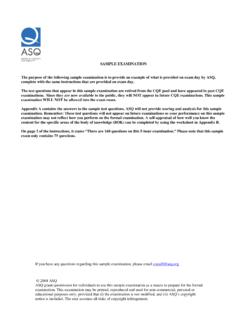Transcription of SAFETY DATA SHEET – ELECTROLYTE / BATTERY ACID
1 SAFETY data SHEET ELECTROLYTE / BATTERY ACIDP roduct Identifier: ELECTROLYTE , BATTERY acid , sulfuric acid (dilute)Manufacturer:Surrette BATTERY Company LimitedPrepared By:Surrette BATTERY Company LimitedPreparation Date: Revision Date: January 21, 2010 August 10, 2016 Supplier Name & Address: Surrette BATTERY Company Limited PO Box 2020, 1 Station Road Springhill, Nova Scotia, Canada B0M 1X0 Tel: 902-597-3767 Emergency Phone #: CANUTEC 1-613-996-66661. IDENTIFICATION2. HAZARD IDENTIFICATIONH E A LTHPHYSICALSkin Corrosion / IrritationCategory 1 ACorrosive to metalsCategory 1 Eye DamageCategory 1 Corrosive to metalsCategory 1 Carcinogenicity ( acid mist)Category 1 ACorrosive to metalsCategory 1 DANGER!
2 May cause cancer from inhalation of mists Harmful if swallowed, inhaled or in contact with skin Causes severe skin burns and eye damage May cause respiratory irritation May be corrosive to metalsHAZARD STATEMENTSSAFETY data SHEET ELECTROLYTE / BATTERY ACID023. COMPOSITION / INFORMATION ON INGREDIENTSINGREDIENTS (CHEMICAL / COMMON NAME)CAS #% BY WEIGHTS ulfuric acid ( ELECTROLYTE )7664-93-9 30-40 Obtain special instructions before use Do not handle until all SAFETY precautionshave been read and understood Do not breathe vapor or mist Wash thoroughly after handling Wear protective gloves/protective clothing,eye protection and face protection If exposed or concerned: get medicaladvice / attention If swallowed: rinse mouth; do NOT induce vomiting If inhaled: remove person to fresh air and keepcomfortable for breathing.
3 Contact poison centeror doctor If on skin (or hair): take off immediately all contaminatedclothing; rinse skin with water/shower; wash contaminatedclothing before reuse If in eyes: rinse cautiously with water for several minutes,remove contact lenses if present and easy to do;continue rinsing, contact poison center or doctorPRECAUTIONARY STATEMENTSSIGNAL WORD: DANGER!4. FIRST-AID MEASURESI nhalation: ELECTROLYTE (Sulfuric acid ) Remove to fresh airimmediately. If not breathing give artifi cial breathing is diffi cult, give oxygen. If breathing diffi cultydoes not improve rapidly, transport to doctor. Consulta doctor or poison control for treatment : ELECTROLYTE (Sulfuric acid ) Give large quantities ofwater, do NOT induce vomiting or aspiration into thelungs may occur and can cause permanent injury ordeath.
4 If vomiting does occur, keep head low to avoidstomach content entering the lungs. Get immediatemedical : ELECTROLYTE (Sulfuric acid ) Flush with large amounts of water for at least 15 minutes. Remove contaminated clothing, including shoes. Wash contaminated clothing before reuse, discard contaminated shoes. Seek medical attention if symptoms/irritation : ELECTROLYTE (Sulfuric acid ) Flush immediately with large amounts of water for at least 20 minutes while lifting lids. Remove contact lenses if present and easy to do, continue rinsing. Seek immediate medical Media / Agents CO2, foam, dry chemical; Water applied to sulfuric acid generates heat andcauses acid to splatter, wear full-cover protective, acid -resistant clothing and self-contained breathing FIRE-FIGHTING MEASURESFire Fighting Procedures:Use self-contained breathing apparatus and standard fi refi ghting procedures, considering hazards of otherinvolved Combustion products: reacts violently with metals, nitrates, chlorates, carbides and other organicmaterials; reacts with most metals to yield explosive and fl ammable hydrogen ACCIDENTAL RELEASE MEASURESWear acid -resistant clothing, boots, gloves and face shield.
5 Stop fl ow of material, contain/absorb small spills withdry sand, earth or vermiculite; do not use combustible materials. If possible, carefully neutralize spilled electrolytewith suitable alkali such as lime, soda ash or sodium bicarbonate. Do not allow discharge of un-neutralized acidto sewer. Flush with water in accordance with applicable regulations. Consult federal, provincial/state and localrequirements for allowed means of HANDLING AND STORAGEH andling:Wear protective clothing and equipment during handlingand avoid contact with skin, eyes and clothing. Wash afterhandling. Storage and handling areas should be equippedwith proper containment to capture and neutralize addition, these areas should be equipped eyewash stationsand SAFETY showers.
6 Do not breathe in vapor, provideadequate ventilation and avoid prolonged :Store in cool, dry, well-ventilated areas with impervious surfaces and adequate containment in the event of a spill. Storage and handling areas should be equipped with proper containment to capture and neutralize spills. In addition, these areas should be equipped eyewash stations and SAFETY showers. Avoid damage to containers, store away from incompatible materials, keep away from metallic objects, heat, sparks and open fl EXPOSURE CONTROLS / PERSONAL PROTECTIONCHEMICALOSHA PELNIOSH (US)ACGIHQUEBEC PEVONTARIO OELOEL (EU)Sulfuric acid ( ELECTROLYTE ) (a)Exposure Limits (mg/m3)(a) Thoracic fractionSAFETY data SHEET ELECTROLYTE / BATTERY ACID04 ELECTROLYTE (SULFURIC acid )Physical state, odor and appearanceLiquid, sharp, pungent odor, colorlessSolubility in water (w/w)100%Boiling point203-2400 FpH~ 1 to 2 ELECTROLYTE (SULFURIC acid )Specific Gravity (H2O = 1) to Pressure (mm Hg)10 Vapor Density (Air = 1)
7 Greater than 1 Evaporation rate(Butyl Acetate = 1) Less than 19. PHYSICAL AND CHEMICAL PROPERTIESThe following information is relevant to ingredients only and is only valid when contents are EXPOSURE CONTROLS / PERSONAL PROTECTION CONT Controls:Store and handle in a well-ventilated area; if mechanical ventilation is used, components must be Protection:None required under normal conditions. Depending on exposure, or sulfuric acid concentrations, use NIOSH or MSHA approved respiratory Protection:Use rubber or plastic acid -resistant gloves with elbow length gauntlet, acid -resistant clothing, apron and Protection:Use chemical splash goggles or face Protection:In areas where sulfuric acid solutions are handled in concentrations greater than 1%, and depending on exposure and workplace standards, emergency eyewash stations and showers should be provided, with unlimited water supply; wash hands after STABILITY AND REACTIVITY stable unstableThis product is stable under normal conditions at ambient temperature.
8 XConditions to avoid:Contact with organic materials, combustibles, strong reducing agents, metals, strong oxidizers, : (materials to avoid)Contact with combustibles and organic materials may cause fi re and explosion; also reacts strongly with strong reducing agents, metals, sulfur trioxide gas, strong oxidizers and water; contact with metals may produce toxic sulfur dioxide fumes and may release fl ammable hydrogen gas; never add water to acid , acid should always be slowly added to Decomposition Products:Sulfur trioxide, sulfur dioxide, sulfuric acid mist, hydrogen sulfi de and carbon polymerization will not data SHEET ELECTROLYTE / BATTERY ACID0511.
9 TOXICOLOGICAL INFORMATIONR outes of entry: Inhalation, ingestion, skin or eye contact; harmful by all routes of breathing of sulfuric acid vapors or mists may cause severe respiratory may cause severe irritation of the mouth, throat, esophagus and Contact severe irritation, burns, and Contact severe irritation, burns, cornea damage and of Overexposure (Acute) severe skin irritation, damage to cornea, upper respiratory of Overexposure (Chronic) possible erosion of tooth enamel, infl ammation of nose, throat and bronchial the International Agency for research on Cancer (IARC) has classifi ed strong inorganic mist containing sulfuric acid as a Group 1 carcinogen, a substance that is carcinogenic to humans.
10 This classifi cation does not apply to liquid forms of sulfuric acid or sulfuric acid solutions contained within a BATTERY . Inorganic acid mist (sulfuric acid mist) is not generated under normal use of this product. Misuse of the product, such as overcharging, may result in the generation of sulfuric acid to sulfuric acid mist may cause lung damage and aggravate pulmonary conditions. Contact of sulfuric acid with skin may aggravate diseases such as eczema and contact (Sulfuric acid )LC50 rat: 375 mg/m3LD50 rat: 2140 mg/kgAdditional Health data : Most inhalation problems can be avoided by adequate precautions such as ventilation and respiratory protection covered in Section 8.


